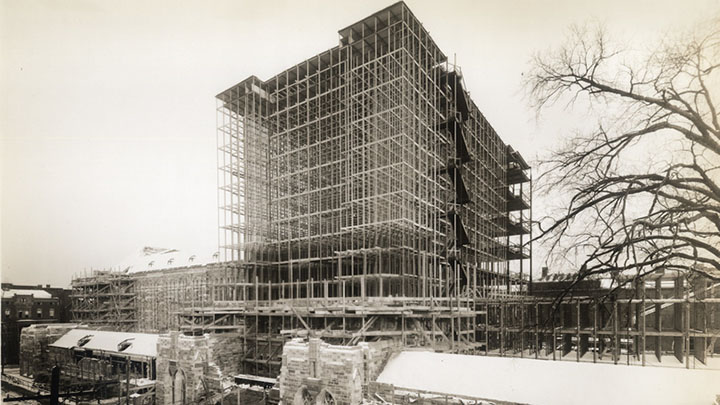Happy 93rd birthday, Sterling Memorial Library
In 1918, John William Sterling, B.A. 1864, bequeathed a generous portion of his estate to Yale University—$15 million (more than $300 million in today’s dollars) and, at the time, the largest sum ever donated to an institution of higher learning.
In his will, Sterling specified that some of the money go toward the construction of “at least one enduring, useful and architecturally beautiful building, which will constitute a fitting Memorial of my gratitude to and affection for my alma mater.”
Sterling’s bequest led to the construction of Sterling Memorial Library, which accounted for $7 million, several other buildings (Sterling Law Building, the Hall of Graduate Studies, and the Sterling Hall of Medicine), and the endowment of the Sterling Professorships.
James Gamble Rogers (B.A. 1889), the architect of many buildings across Yale’s Campus and throughout New Haven, was chosen to design the library that would stand at the heart of the university’s campus.
The steel-framed, multilevel bookstack tower—an innovative construction in that era—contained sixteen levels of shelving in its seven stories. The library tower was built to house 3.5 million books. By the time the library was completed, the collection already contained nearly 2 million volumes; today, there are more than 3 million volumes in the stacks of Sterling Library.
On October 11, 1928, Rogers helped lay the cornerstone for Sterling Library. The building was dedicated on April 11, 1931. In his remarks at the ceremony, then Yale University President James Rowland Angell described the towering neo-Gothic masterpiece as “a very temple of the mind.”
Read more in the online exhibition “Architectural History of Sterling Memorial Library,” permanently on display on the library’s website.
—Deborah Cannarella
Image: Sterling Memorial Library stack tower during construction, circa 1930s



